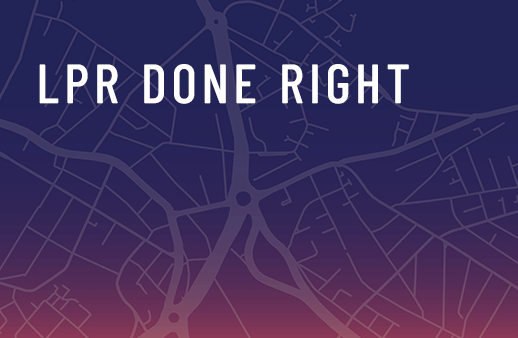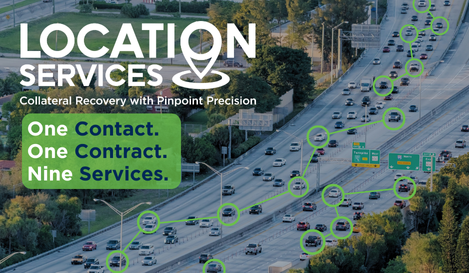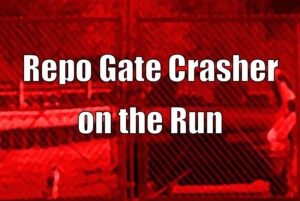Edged Weapon Defense in the Recovery Industry
GUEST EDITORIAL
I have recently noticed numerous attacks on asset recovery agents with various edged weapons from screwdrivers to machetes and in response I feel the following article is timely and appropriate.
I recognize that the repossession process is the most invasive and dangerous act related to the credit and collection process and strongly advocate avoiding any type of confrontation which might lead to violence during the attempt to recover mortgage property, however I have been in the industry for over 50 years and having personally worked over 40,000 assignments am fully aware that every assignment carries the possibility of confrontation and violence which may result in injury and even death.
With that knowledge I feel every member of the asset recovery industry should know how to legally defend themselves or others in order to avoid injury or death when the ability to retreat is not possible and it is with that knowledge, I write this short article on self-defense against edged weapons.
I feel it is important to preface this article with two very important statements:
- I am not an attorney and nothing in this article should be taken as legal advice. For legal advice you should consult with your agency attorney or the attorney of the national trade association of which you are a member.
- “The best fight is the one you are not in”. You should always utilize situational awareness during an attempt to recover property and if you feel threatened or if there is any potential for violence, if any person objects to the repossession prior to its completion remember that you have a duty to disengage and leave the area immediately. Remember, no arguing, no hesitation, LEAVE THE SCENE IMMEDIATELY.
Now, let’s get down to a few basics of edged weapon self-defense. How can you respond if you are unable to disengage during a repossession, your exit path is blocked, and violence appears unavoidable. Other than the use of fists or blunt objects such as a baseball bat or some type of club, the most common weapon you will face is a sharp-edged weapon, most likely a knife.
In self-defense, martial arts, and tactical spaces, there is perhaps nothing more polarizing than knife-attack defense.
Anyone who has spent much time in the asset recovery industry knows that when it comes to interpersonal violence, knife attacks can be the most frightening to deal with, and in my long career in the asset recovery industry I have spent a lot of time looking for ways to avoid this type of encounter.
But if avoidance is not an option, if you are unable to retreat to safety there are a few things I believe everyone in the asset recovery industry should know. The motto of Eagle Group XX is “Knowledge is Power” and there are three important areas of knowledge recover agents should be aware of related to an edged weapon attack…Knowledge about the WEAPON, knowledge about the USER, and finally knowledge related to a DEFENSIVE RESPONSE.
KNOWLEDGE OF THE EDGED WEAPON
Edged weapons rarely fail. Unlike firearms, they have very few, if any, mechanical components. Blades do not run out of ammunition. Blades do not have a “line of fire,” as most of what is exposed is dangerous, and once presented, blades are always live. Unlike firearms, edged weapons are often weapons of convenience, gleaned from the environment during a violent encounter, and are therefore the recovery agent should be aware they are more prevalent: and not limited to a knife. The agent should be aware of screwdrivers, scissors, pens, machetes, and more. Furthermore, edged weapons are quite common in crimes of passion/emotion, and we generally see numerous stabs and slashes in an attack.
KNOWLEDGE OF THE USER
Here’s the dirty little secret that people who know how to use edged weapons don’t want you to know: You do not need to be skilled with an edged weapon, a knife, to do massive damage. All that is needed is intent. Everyone with a knife or other type of edged weapon has the potential to be deadly. The mindset of someone who chooses a knife over a gun is quite distinct. A firearm is designed and intended as a distance weapon. The user is not required to touch the victim/target.
It is quite different with a knife or other edged weapon; the user must be willing to run a piece of steel through skin and muscle and bone and tendon and whatever else might be in the way. This is someone must feel comfortable with getting bloody, and feeling the life leave another human. This is not “required” with really any other weapon. This is an incredibly important thing to remember when dealing with a knife attack or threat.
I would caution any recovery agent who cannot retreat from a violent encounter with a person threatening to use an edged weapon, you must be willing to meet such an attacker with comparable or superior aggression and intent. I also have found that most people threatening someone with a knife have handled edged weapons, in one form or another, throughout most of their lives, so it is a very familiar weapon to them, and they will not hesitate to use it.
KNOWLEDGE OF THE DEFENSIVE RESPONSE
- Be first: At the first sign of imminent violence, act first, retreat from the area, if you are unable to retreat attempt to de-escalate the situation by complying with the demands of the person threatening you, YES… drop the vehicle and get out of there! If you cannot retreat and you are unable to de-escalate the situation, if violence is eminent an effective defense may be your only option.
- Disengage ASAP: As Soon As Possible, create an opportunity to safely leave. The more time that passes, the more variables increase. This tends to favor the attacker.
- Use force multipliers when it makes sense: Many of the things you carry in your vehicle such as tools, fire extinguishers, and even books or laptops may be used as defensive weapons. You should know what may be available and it may be prudent to train with them. It is imperative to know when to use a defensive weapon, and when it is more of a liability than an advantage. Don’t assume that just because you have trained with a defensive weapon, a tire tool for example, it means you are somehow impervious to knife attacks. Empty-hand skills are imperative. If you doubt that, check out the infographic I have included in this article.
- Learn to fight: If you cannot safely leave a scene where violence is eminent and you are forced to defend yourself or others by fighting fight someone who is armed with an edged weapon, there are no special techniques I am aware of. You need to punch, wrestle, kick, bite, or whatever it takes to avoid injury… you need to learn to FIGHT. Always remember that “Self-defense” is just a marketing term. Learn to FIGHT FOR YOUR LIFE.
- Get control: If you took the “LEARN TO FIGHT” advice, you will understand that “two on one” is the only control that really matters. Fights are about winning moments in time, and control might be a fleeting moment, but to have it and win it, you need two hands/arms/legs on the one holding the knife. Anything else and you are a wrist release away from being gutted.

- Use your striking to set up your wrestling and your wrestling to set up your striking: You might hit them to gain your two-on-one control, then use that control to deliver counterattacks, or you might get control in order to counterattack, but these delivery systems should not be mutually exclusive. You need to learn how to use one to assist the other, or to gain access to your force multiplier and make sure it stays yours.
- Forget about disarms: Any disarms, or takeaways should likely be incidental. They should primarily happen because of your counterattacks, not because you attempt to strip the knife from the attacker. First, disarming techniques are almost always very fine-motor oriented, and second, they ignore the real problem: If the attacker is still upright and holding the knife, he is still fighting, and you are busy trying to take a knife instead of fighting back. Becoming fixated on the weapon instead of the person wielding it is incredibly dangerous. Being weapon centric, either from an offensive or defensive perspective, ignores the reality of the situation: One human is fighting another, and without human involvement, the weapon is a non-issue.
SUMMARY
I would summarize this article by stating that, if possible, use your situational avoidance training (Eagle Group XX SACADET/Situational Avoidance, Confrontational Avoidance and De-Escalation Techniques…available to anyone in the industry at no charge) to avoid bad places and violent situations. Do not engage any person making threats with a knife or any weapon unless you have no avenues of retreat, de-escalation and other viable options. But, as those of us who work in the field know, this is not always possible so always keep in mind that the variable you ultimately control is YOU. The time and energy you put into learning to deal with such encounters are your responsibility and might be the only thing that keeps you alive should things get bad. Knowledge and training matters. As a professional asset recovery agent, or in reality, any person in the asset recovery industry, you must always remember…
Prepare to protect what matters most… YOU..
Ron Brown MCE, IFCCE, CCCO, MPRS, CARS, API
Facilitator of Eagle Group XX/USA















Facebook Comments